Email marketing has become an essential tool for businesses to connect with their audience and drive conversions. It allows companies to reach a large number of people directly in their inbox, providing an opportunity to deliver personalized and targeted messages. Personalization in email marketing is the practice of tailoring emails to individual recipients based on their preferences, behavior, and demographics. This article will explore the importance of personalization in email marketing and how it can significantly impact open rates, conversion rates, and overall campaign success.
Key Takeaways
- Personalization is crucial in email marketing to increase engagement and build relationships with subscribers.
- Personalized subject lines can significantly boost email open rates.
- Segmentation allows for targeted and relevant content to be sent to specific groups of subscribers.
- Effective personalized subject lines should be concise, relevant, and attention-grabbing.
- Dynamic content can be used to tailor email content to individual subscribers based on their behavior and preferences.
Understanding the Importance of Personalization in Email Marketing
Personalization in email marketing refers to the customization of email content and design to meet the specific needs and interests of individual recipients. It goes beyond simply addressing the recipient by name; it involves using data and insights to create relevant and engaging content that resonates with the recipient. Personalization is crucial in email marketing because it helps build a stronger connection with the audience, increases engagement, and drives conversions.
Statistics show that personalization has a significant impact on email marketing success. According to a study by Experian, personalized emails deliver six times higher transaction rates compared to non-personalized emails. Another study by Campaign Monitor found that emails with personalized subject lines are 26% more likely to be opened. These statistics highlight the importance of personalization in capturing the attention of recipients and driving them to take action.
How Personalization Can Boost Your Email Open Rates
Personalization plays a crucial role in increasing email open rates. When recipients see an email that is tailored specifically to them, they are more likely to open it out of curiosity or interest. Personalized subject lines are particularly effective in grabbing attention and enticing recipients to open the email.
For example, a clothing retailer could send an email with the subject line “Sarah, get 20% off your favorite summer dresses!” This personalized subject line not only addresses the recipient by name but also offers a discount on a product category that the recipient has shown interest in. This level of personalization creates a sense of exclusivity and relevance, making the recipient more likely to open the email.
Statistics support the impact of personalization on email open rates. According to a study by Aberdeen Group, personalized emails have an average open rate of 18.8%, compared to 13.1% for non-personalized emails. This shows that personalization can significantly increase the chances of recipients opening and engaging with emails.
The Role of Segmentation in Personalized Email Marketing
Segmentation is a crucial component of personalized email marketing. It involves dividing your email list into smaller, more targeted groups based on specific criteria such as demographics, behavior, or preferences. By segmenting your audience, you can create more personalized and relevant content that resonates with each group.
For example, a travel agency could segment their email list based on travel preferences such as adventure travel, beach vacations, or city breaks. They can then send personalized emails to each segment, featuring destinations and activities that align with their interests. This level of segmentation allows the travel agency to deliver highly targeted content that is more likely to resonate with each recipient.
Segmentation improves personalization by allowing businesses to tailor their messaging and offers to specific groups within their audience. It ensures that recipients receive content that is relevant and valuable to them, increasing engagement and driving conversions.
Crafting Effective Personalized Email Subject Lines
Subject lines play a crucial role in email marketing as they are the first thing recipients see when they receive an email. A personalized subject line can make a significant difference in whether or not an email gets opened.
When crafting personalized subject lines, it’s important to keep them concise, clear, and compelling. Use the recipient’s name whenever possible to create a sense of familiarity and connection. Additionally, consider using dynamic content in subject lines to make them even more personalized. For example, a retail store could send an email with the subject line “John, your favorite items are back in stock!” This subject line not only addresses the recipient by name but also creates a sense of urgency and exclusivity.
Examples of successful personalized subject lines include:
– “Sarah, don’t miss out on our exclusive sale!”
– “John, we have a special offer just for you!”
– “Emma, your personalized recommendations are here!”
Using Dynamic Content to Personalize Your Email Campaigns

Dynamic content is a powerful tool for personalizing email campaigns. It allows businesses to create emails that automatically adapt to the recipient’s preferences, behavior, or demographics. Dynamic content can be used to display different product recommendations, offers, or images based on the recipient’s past interactions with the brand.
For example, an online retailer could send an email featuring different products based on the recipient’s browsing history. If the recipient has shown interest in shoes, the email could display a selection of shoes that are similar to the ones they have viewed or purchased in the past. This level of personalization creates a tailored experience for each recipient and increases the chances of conversion.
Dynamic content improves personalization by delivering highly relevant and targeted content to each recipient. It allows businesses to leverage data and insights to create personalized experiences that resonate with their audience.
Personalization Best Practices for B2B Email Marketing
Personalization is not limited to B2C email marketing; it can also be highly effective in B2B email campaigns. Personalization in B2B email marketing involves tailoring content and messaging to individual recipients based on their role, industry, or company size.
Best practices for personalizing B2B email campaigns include:
1. Segmenting your audience based on industry or job title: By segmenting your B2B email list, you can create more targeted and relevant content for each group.
2. Addressing the recipient by name and company: Personalize your emails by addressing the recipient by name and mentioning their company. This creates a sense of familiarity and relevance.
3. Offering personalized solutions or recommendations: Provide personalized solutions or recommendations based on the recipient’s industry or role. This shows that you understand their specific needs and can offer tailored solutions.
Examples of successful B2B personalized email campaigns include:
– “John, as a marketing manager, you’ll love our new analytics tool!”
– “Sarah, as a CEO in the healthcare industry, our software can help streamline your operations!”
Personalization Strategies for E-commerce Email Marketing
Personalization is particularly important in e-commerce email marketing as it allows businesses to deliver highly targeted offers and recommendations to their customers. Personalization in e-commerce email marketing involves using data and insights to create tailored experiences that drive engagement and conversions.
Best practices for personalizing e-commerce email campaigns include:
1. Sending personalized product recommendations: Use data on past purchases or browsing behavior to recommend products that are relevant to each customer.
2. Offering personalized discounts or promotions: Provide exclusive discounts or promotions based on the customer’s preferences or purchase history. This creates a sense of exclusivity and encourages repeat purchases.
3. Sending abandoned cart reminders: Use personalization to send automated emails reminding customers about items they have left in their cart. Include personalized product recommendations or discounts to entice them to complete their purchase.
Examples of successful e-commerce personalized email campaigns include:
– “Sarah, we think you’ll love these new arrivals!”
– “John, don’t forget about the items in your cart – here’s a 10% discount to complete your purchase!”
The Impact of Personalization on Email Conversion Rates
Personalization has a significant impact on email conversion rates. When recipients receive personalized and relevant content, they are more likely to engage with the email and take the desired action, whether it’s making a purchase, signing up for a webinar, or downloading a resource.
Statistics show that personalized emails have higher conversion rates compared to non-personalized emails. According to a study by Monetate, personalized emails have a 29% higher conversion rate compared to generic emails. This highlights the importance of personalization in driving conversions and achieving campaign goals.
Examples of successful personalized email campaigns that increased conversion rates include:
– “Sarah, get 50% off your first purchase – limited time offer!”
– “John, join our webinar and learn how to boost your sales by 50%!”
Measuring the Success of Your Personalized Email Campaigns
Measuring the success of your personalized email campaigns is crucial to understanding their impact and making data-driven decisions for future campaigns. There are several metrics you can track to measure the success of your personalized email campaigns:
1. Open rate: Measure the percentage of recipients who open your emails. A higher open rate indicates that your subject lines and personalization efforts are effective in capturing attention.
2. Click-through rate: Measure the percentage of recipients who click on links within your emails. A higher click-through rate indicates that your content and offers are engaging and relevant to your audience.
3. Conversion rate: Measure the percentage of recipients who take the desired action, such as making a purchase or signing up for a webinar. A higher conversion rate indicates that your personalization efforts are driving results.
Tools such as Google Analytics, Mailchimp, or HubSpot can help you track these metrics and gain insights into the success of your personalized email campaigns.
Future Trends in Personalized Email Marketing
The future of personalized email marketing is constantly evolving as technology advances and consumer expectations change. Some future trends in personalized email marketing include:
1. Artificial intelligence (AI) and machine learning: AI and machine learning technologies can analyze large amounts of data to deliver highly personalized and relevant content to each recipient. This includes personalized product recommendations, dynamic content, and automated personalization based on user behavior.
2. Hyper-personalization: Hyper-personalization takes personalization to the next level by delivering individualized experiences to each recipient. This includes personalized landing pages, unique offers, and tailored content based on the recipient’s preferences and behavior.
3. Interactive emails: Interactive emails allow recipients to engage with the content directly within the email, without having to click through to a website or landing page. This includes features such as image carousels, surveys, quizzes, or add-to-cart buttons.
To stay ahead of the curve in personalized email marketing, businesses should continuously monitor industry trends, experiment with new technologies and strategies, and listen to customer feedback.
Personalization is a powerful tool in email marketing that can significantly impact open rates, conversion rates, and overall campaign success. By tailoring emails to individual recipients based on their preferences, behavior, and demographics, businesses can create more relevant and engaging content that resonates with their audience. Personalization is not limited to B2C email marketing; it can also be highly effective in B2B and e-commerce email campaigns.
To implement personalization in your email campaigns, consider segmenting your audience, crafting personalized subject lines, using dynamic content, and leveraging data and insights to create tailored experiences. Measure the success of your personalized email campaigns by tracking metrics such as open rate, click-through rate, and conversion rate. Stay ahead of the curve by keeping an eye on future trends in personalized email marketing and experimenting with new technologies and strategies.
In conclusion, personalization is not just a trend; it is a fundamental aspect of successful email marketing. By investing in personalization strategies and continuously improving your efforts, you can build stronger connections with your audience, increase engagement, and drive conversions.
If you’re interested in the power of personalization in email marketing, you may also want to check out this related article on “The Benefits of Utilizing Chatbots and AI Technology to Improve Customer Service and Streamline Operations.” This article explores how businesses can leverage chatbots and AI technology to enhance customer experiences, automate processes, and drive efficiency. With personalized interactions becoming increasingly important in today’s digital landscape, incorporating chatbots and AI can be a game-changer for businesses looking to stay ahead of the competition. Read more
FAQs
What is personalization in email marketing?
Personalization in email marketing refers to the practice of tailoring email content and messaging to individual recipients based on their preferences, behaviors, and other data points. This can include using their name in the subject line or body of the email, recommending products or services based on their past purchases or browsing history, and sending targeted promotions or offers.
Why is personalization important in email marketing?
Personalization is important in email marketing because it helps to increase engagement, improve open and click-through rates, and ultimately drive conversions. By delivering relevant and personalized content to recipients, businesses can build stronger relationships with their customers and increase the likelihood of repeat purchases and brand loyalty.
What types of data can be used for personalization in email marketing?
Data that can be used for personalization in email marketing includes demographic information (such as age, gender, and location), past purchase history, browsing behavior, email engagement metrics (such as open and click-through rates), and other customer preferences and interests.
How can businesses collect data for personalization in email marketing?
Businesses can collect data for personalization in email marketing through a variety of channels, including website analytics, customer surveys, social media engagement, and email engagement metrics. They can also use third-party data sources to supplement their own data and gain a more comprehensive understanding of their customers.
What are some best practices for personalization in email marketing?
Some best practices for personalization in email marketing include using the recipient’s name in the subject line or body of the email, segmenting email lists based on customer data, sending targeted promotions and offers, and using dynamic content to deliver personalized product recommendations and other content. It’s also important to ensure that all data is collected and used in compliance with relevant privacy regulations.
